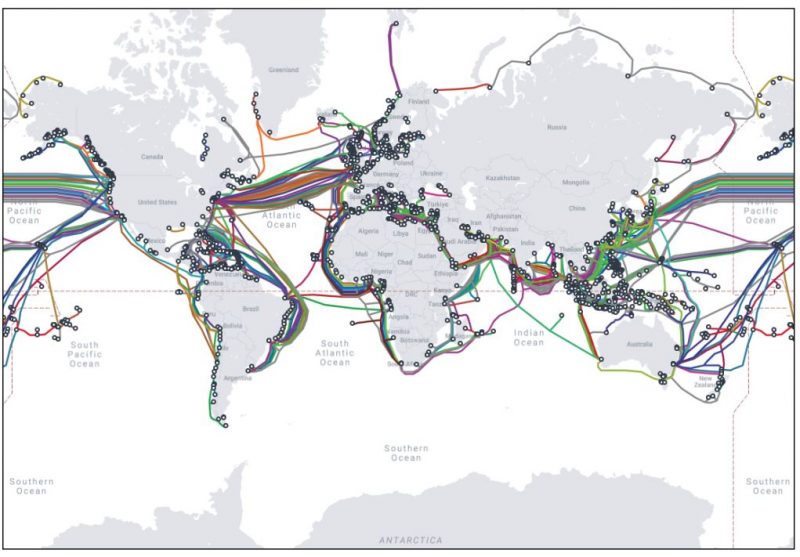With an increasing number of Chinese-owned companies involved in operating cables and Russia’s interest in mapping the submarine cable system, the report suggests a strong likelihood of potential sabotage or disruption.
The backbone of the global economy and telecommunications, submarine cables, face an escalating threat environment, including geopolitical, physical, and cybersecurity risks, warns intelligence company Recorded Future.
It should not come as a surprise, as just last week, Hackread.com published an exclusive report revealing that hackers have been selling access to military satellites. This allows buyers to gain visibility into the military and strategic positioning within the United States. It indicates that hackers have become a critical threat to critical infrastructure, from the sky to the deep sea.
These fiber-optic cables, responsible for transmitting approximately 99% of all intercontinental internet traffic and crucial communications, are increasingly targeted for intelligence gathering and sabotage due to their involvement in $10 trillion worth of daily financial transactions and sensitive government and military exchanges.
The number of undersea cables has doubled over the past decade, now totalling an estimated 529 systems in operation, with their capacity expected to grow to accommodate the rising demand for internet connectivity worldwide.
Recorded Future’s report emphasizes intentional attacks as the most detrimental risk to submarine cables, surpassing accidental damage caused by ship anchors or fishing vessels. State-sponsored groups pose the greatest threat in terms of deliberate sabotage and spying.
With an increasing number of Chinese-owned companies involved in operating cables and Russia’s interest in mapping the submarine cable system, the report suggests a strong likelihood of potential sabotage or disruption.
The report further highlights major geopolitical developments, such as Russia’s conflict with Ukraine and China’s coercive actions towards Taiwan, as well as escalating tensions between Beijing and Washington, as key factors influencing the near-term risk environment.
China’s dominant role in the industry raises concerns about its ability to control digital flows and dictate the location of new cables, thereby creating new opportunities for intelligence collection through the landing stations it controls.
Meanwhile, Russia poses a physical security threat to submarine cables, particularly those in the North Sea region. Severing a cable can cause significant disruptions, and damage inflicted in deep water would be even more impactful due to longer repair times. State-sponsored threat actors possess the necessary resources to identify and target cables in deep water.
Intentional damage or sabotage represents a unique threat vector, as it can disproportionately affect countries and companies reliant on the affected cable system, although such incidents are less frequent.

The report (PDF) also raises concerns about the increasing influence of hyperscale companies like Amazon, Google, Meta, and Microsoft in the global cable network, potentially leading to market monopolies and challenges to digital sovereignty.
Landing stations, which connect submarine cables to terrestrial networks, present attractive targets for intelligence collection due to potentially inadequate security measures compared to deep underwater cables. These stations house network management equipment and power feeds, making them more accessible to threat actors.
The use of remote network management systems in monitoring and controlling infrastructure creates another vulnerability that state-sponsored adversaries, ransomware groups, and other threat actors are likely to exploit.
Recorded Future suggests that state actors seeking an espionage advantage will undoubtedly target the entire submarine cable ecosystem, including landing station infrastructure, the cables themselves, third-party providers, and the underlying hardware and software. Additionally, Russia is expected to intensify both overt and covert mapping of submarine cables and potentially engage in targeted sabotage on land and underwater.
